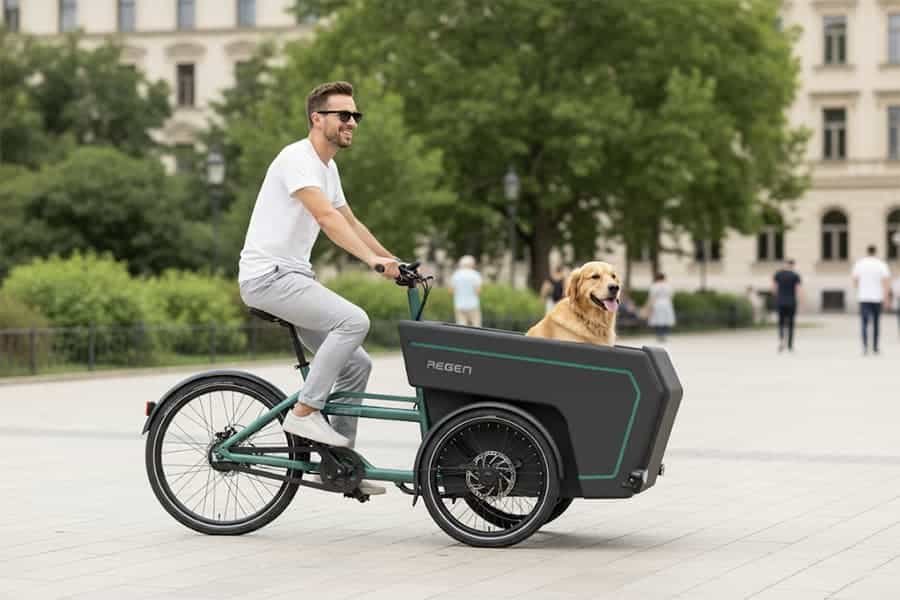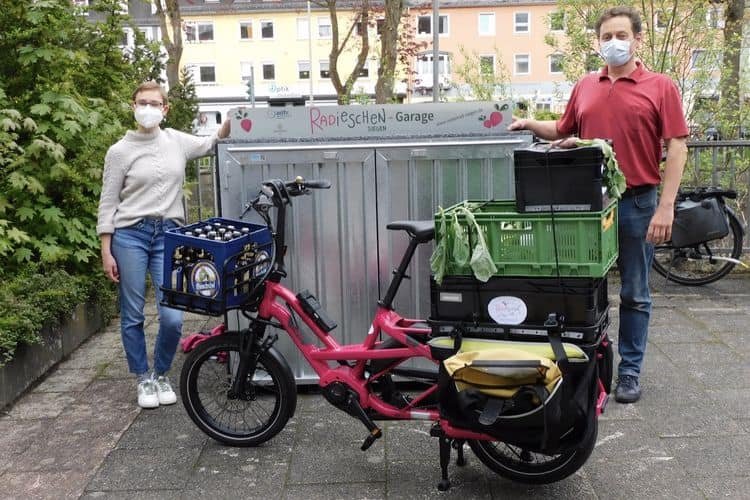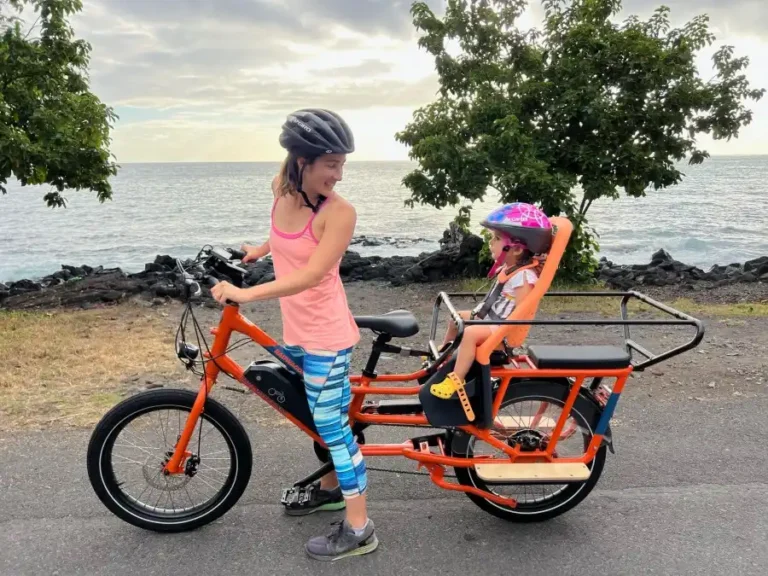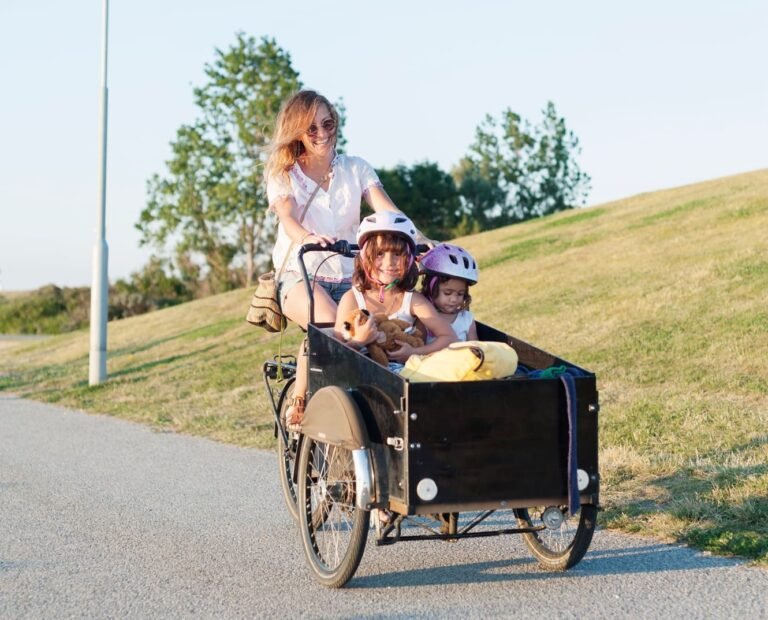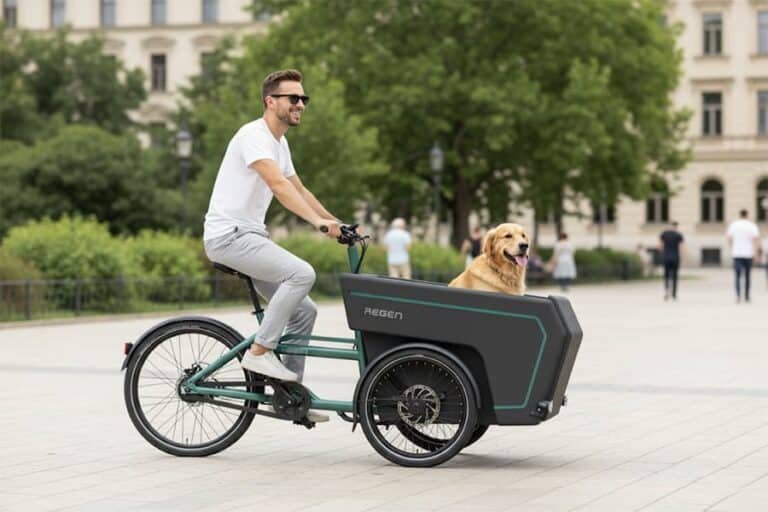Se state acquistando una e-bike, compresa una bici da carico - è molto probabile che vi imbattiate nei termini Classe 1, Classe 2, E Classe 3. Queste etichette sono importanti perché aiutano a definire il comportamento della bicicletta, i luoghi in cui è possibile utilizzarla e le regole da rispettare. Di seguito, illustro in dettaglio il significato di ciascuna classe, il motivo per cui è importante per una cargo-e-bike e cosa bisogna tenere d'occhio in termini di normative e usabilità.
Perché esistono le classi
Le biciclette elettriche rendono meno netta la linea di demarcazione tra "bicicletta normale" e "veicolo motorizzato". Per aiutare le autorità di regolamentazione, i gestori delle infrastrutture e i ciclisti a capire come stanno le cose, molte giurisdizioni negli Stati Uniti hanno adottato un sistema a tre classi per le biciclette elettriche.
In breve: le classi distinguono il funzionamento del motore (pedalata assistita o acceleratore) e la velocità di assistenza (20 mph o 28 mph).
Questo è importante per la vostra bici da carico, perché i luoghi in cui è consentito guidare - sentieri multiuso, piste ciclabili, sentieri - spesso dipendono dalla classe. Inoltre, la classe influisce sul comportamento della bicicletta sotto carico (particolarmente importante quando si trasporta un carico).
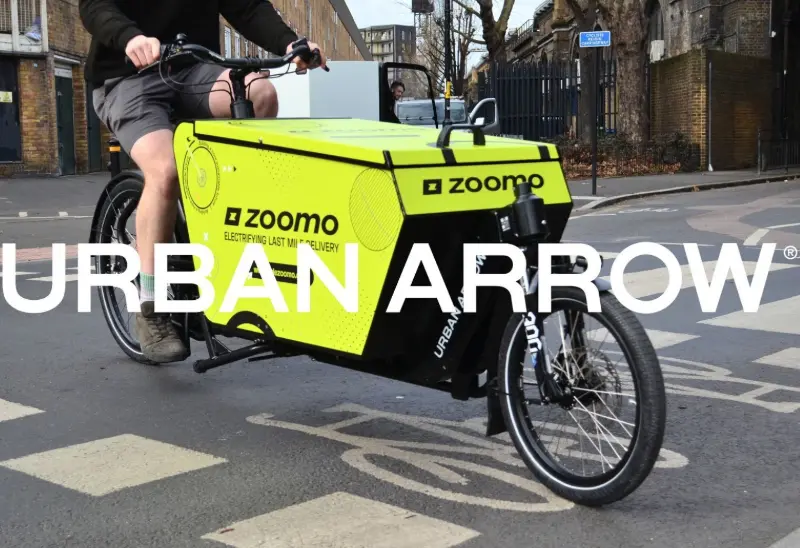
Biciclette elettriche di Classe 1 - "Solo a pedalata assistita, fino a 20 miglia orarie".
Definizione: Una e-bike di Classe 1 è dotata di un motore che fornisce assistenza solo quando il ciclista sta pedalando e l'assistenza si interrompe a 20 mph.
Come si guida: Sembra una bicicletta normale, ma quando si pedala il motore aiuta. Non si ottiene l'assistenza del motore se ci si limita a girare l'acceleratore e a sedersi (a meno che la bicicletta non abbia una strana eccezione, ma la definizione standard è niente acceleratore).
Perché è importante per l'uso del carico:
- Poiché si deve pedalare, si fa comunque un buon esercizio fisico e si rimane impegnati.
- Il limite di 20 mph significa che è sicuro per molti percorsi ad uso condiviso, traffico misto e sentieri (a seconda delle regole locali). Molti sistemi di sentieri consentono esplicitamente le biciclette di Classe 1.
- Quando si trasportano carichi pesanti (bambini, attrezzi, generi alimentari), una bicicletta di Classe 1 offre comunque l'aiuto del motore, ma per ottenere prestazioni ottimali è necessario pedalare.
A cosa prestare attenzione:
- Dimensionamento della batteria e del motore: poiché si pedala, è necessario un motore con una coppia sufficiente a gestire il peso di una cargo bike carica.
- Terreno: Con un carico pesante, pedalare in salita + il limite di 20 mph significa che sarete più lenti, ma questo può andare bene a seconda del caso d'uso.
- Accesso: Per molti sentieri dove le "biciclette a motore" sono limitate, la Classe 1 è spesso la scelta più sicura per una bici da carico che trasporta bambini o passeggeri.
Biciclette elettriche di classe 2 - "Acceleratore + pedale, fino a 20 miglia orarie".
Definizione: Le biciclette elettriche di Classe 2 sono dotate di pedalata assistita (il motore si attiva quando si pedala). E un acceleratore in grado di spingere la bicicletta indipendentemente dalla pedalata. L'assistenza (motore) si interrompe a 20 miglia orarie.
Come si guida: È possibile pedalare e lasciare che il motore amplifichi lo sforzo (pedalata assistita). O è sufficiente ruotare/premere l'acceleratore per partire, anche senza pedalare. Particolarmente utile quando si è stanchi, si trasporta un carico o si vuole fare una pausa dalla pedalata.
Perché è importante per le cargo bike:
- L'acceleratore offre un'opzione di "spinta" supplementare, particolarmente utile quando si trasportano carichi pesanti (bambini, spesa, cambio) in salita o quando si vuole semplicemente viaggiare in modo confortevole.
- Il limite di 20 miglia orarie le fa rientrare in molte delle stesse zone di accesso delle biciclette di Classe 1, anche se le regole locali variano.
- Per le famiglie o per l'uso di carichi che possono variare (bambino, genitore, nonno), l'acceleratore può rendere il viaggio più inclusivo per le persone meno forti o meno esperte.
Considerazioni / compromessi:
- Assorbimento della batteria: L'utilizzo dell'acceleratore scarica la batteria più rapidamente rispetto alla pedalata assistita. Più il carico è pesante, più la capacità della batteria diventa importante.
- Regolamenti: Alcuni sentieri/vie potrebbero limitare le biciclette con il solo acceleratore in modo più severo rispetto a quelle con pedalata assistita.
- Sensazione: alcuni ciclisti preferiscono la sensazione di "pura assistenza alla pedalata" piuttosto che l'intervento del motore tramite l'acceleratore.
Biciclette elettriche di classe 3 - "Pedalata assistita ad alta velocità, fino a 28 miglia orarie".
Definizione: Una e-bike di Classe 3 è dotata solo di pedalata assistita (cioè il motore si attiva solo quando si pedala), ma consente un'assistenza fino a 28 miglia orarie. Alcuni Stati possono consentire l'accelerazione, ma molti non lo fanno.
Come si guida: È il tipo di e-bike "legale" più veloce (secondo la classificazione standard). È l'ideale per il pendolarismo, per stare al passo con il traffico o per coprire rapidamente più terreno. Si continua a pedalare, ma la bicicletta è in grado di assistere l'utente fino a velocità quasi motociclistiche (in senso relativo) su un telaio tipico di una bicicletta.
Perché potrebbe essere importante per una cargo bike:
- Se la vostra cargo bike viene utilizzata per un serio pendolarismo (trasportare i bambini a scuola e poi andare al lavoro), la velocità può essere un grande vantaggio.
- L'assistenza a 28 miglia orarie riduce lo sforzo sulle lunghe percorrenze o quando si trasportano carichi pesanti, consentendo di arrivare più freschi.
- Particolarmente utile se il percorso comprende strade trafficate e si vuole tenere il passo con il traffico.
Importanti implicazioni normative e di accesso:
- A causa della velocità più elevata, le biciclette di Classe 3 sono spesso soggette a maggiori restrizioni per quanto riguarda i luoghi in cui possono circolare (piste ciclabili, sentieri multiuso) rispetto alla Classe 1/2.
- Alcuni stati richiedono l'uso del casco o un'età minima per la Classe 3. Ad esempio, in California i piloti di Classe 3 devono avere almeno 16 anni e tutti i piloti sotto i 18 anni devono indossare il casco.
- Le dimensioni della batteria, il cambio, la frenata e la sicurezza diventano più importanti quando ci si muove più velocemente con un carico pesante.
Scegliere la classe giusta per il caso d'uso della bicicletta da carico
| Caso d'uso | Classe ideale | Perché |
|---|---|---|
| Commissioni locali, trasporto dei bambini nel quartiere (molti sentieri secondari) | Classe 1 O Classe 2 | Molti sentieri e percorsi condivisi consentono la Classe 1 (e spesso la Classe 2). L'acceleratore (Classe 2) aggiunge flessibilità per le corse con carico. |
| Uso misto: spostamenti + tragitti con la famiglia + giri più lunghi nel fine settimana | Classe 2 (O Classe 3 se si privilegia la velocità) | L'acceleratore e la pedalata assistita offrono flessibilità; la velocità moderata va bene. |
| Pendolare veloce che trasporta carichi (bambini, attrezzatura) su strade, eventualmente su distanze più lunghe | Classe 3 | La maggiore velocità di assistenza consente di tenere il passo con il traffico e di coprire più terreno. Ma controllate le restrizioni di accesso. |
Altre considerazioni chiave nella scelta:
- Specifiche della batteria e del motore: Per una bici da carico il peso sarà spesso maggiore (bici + carico + pilota). Un buon motore con una forte coppia e una batteria capiente saranno più importanti della semplice etichetta di classe.
- Freni e sicurezza: Per i carichi più pesanti e le velocità più elevate (soprattutto per la Classe 3) sono necessari freni potenti, buoni pneumatici e un buon equipaggiamento per la visibilità.
- Accesso e regolamenti: Anche se la vostra bicicletta è in grado di raggiungere velocità di Classe 3, i sentieri locali o i percorsi multiuso potrebbero limitarvi a una Classe 1 o 2. Controllate sempre le normative locali.
- Carico e stabilità: Una cargo bike ha una maneggevolezza diversa rispetto a una normale e-bike. A velocità più elevate (Classe 3) o quando si usa l'acceleratore (Classe 2) la dinamica cambia. Assicuratevi che la bicicletta sia costruita per il carico.
- Forza e preferenza del cavaliere: Se volete pedalare e fare esercizio, la Classe 1 o 3 (solo pedalata assistita) potrebbe essere interessante. Se volete fare meno fatica, soprattutto quando trasportate bambini o carichi pesanti, la Classe 2 è una scelta valida.
Il panorama legale e normativo: Cosa bisogna sapere
Capire la classificazione è metà della battaglia, l'altra metà è dove si può pedalare E quali regole si applicano. Questo aspetto è particolarmente importante per una bici da carico, perché si possono utilizzare piste ciclabili, sentieri multiuso, parchi, ecc.
Prospettiva federale
A livello federale degli Stati Uniti, agenzie come l'Agenzia per la sicurezza alimentare e la protezione civile Servizio del Parco Nazionale (NPS) e Ufficio di gestione del territorio (BLM) riconosce il sistema a tre classi nella definizione di "biciclette elettriche a bassa velocità" per alcuni terreni. Ad esempio:
- Il motore deve essere ≤ 750 W, deve essere dotato di pedali e la velocità massima del solo motore deve essere ≤ 20 mph (per molte definizioni).
- Le definizioni dell'agenzia non stabilire dove le e-bike possono circolare - i gestori locali del territorio decidono se autorizzare una determinata classe di e-bike su un sentiero o una strada.
Variazione statale e locale
Gli Stati adottano il sistema a tre classi in modi leggermente diversi. Ad esempio, in California:
- Classe 1 e 2: assistenza fino a 20 mph, nessuna età minima specificata per la maggior parte dei piloti.
- Classe 3: assistenza fino a 28 mph, il pilota deve avere almeno 16 anni, casco obbligatorio. Inoltre: alcuni sentieri o percorsi multiuso possono divieto Moto di classe 3 (o utilizzo del solo acceleratore) anche se le moto soddisfano le definizioni legali.
Perché questo è importante per l'uso della cargo bike
- Se trasportate i bambini con la cargo bike, probabilmente vorrete sentieri/vie con accesso sicuro. La classe 1 o 2 offre l'accesso migliore.
- Se scegliete la Classe 3, assicuratevi che i vostri percorsi consentano questa classe, soprattutto se intendete utilizzare sentieri multiuso, parchi o percorsi condivisi.
- L'utilizzo dell'acceleratore (Classe 2) o di velocità elevate (Classe 3) può attirare un ulteriore controllo normativo (limiti di età del casco, divieti di circolazione, ecc.)
- Le modifiche sono importanti: Modificare la vostra e-bike (ad esempio, aumentare la potenza del motore, aumentare la velocità oltre i limiti) può riclassificarla o violare le norme locali.
Mettere tutto insieme
- Definire il loro caso d'uso
- Fanno viaggi di quartiere con la famiglia (bambini, spesa)?
- Si tratta di pendolari che percorrono lunghe distanze con un carico?
- Si percorreranno piste ciclabili, sentieri multiuso o strade?
- Privilegiare le classi in base all'accesso, alla velocità e al carico
- Se l'accesso ai sentieri e i percorsi sicuri sono una priorità → Classe 1 o 2.
- Se la velocità e il pendolarismo stradale sono prioritari → Classe 3.
- Se si desiderano carichi pesanti + colline + meno pedalate → la Classe 2 (acceleratore + assistenza) potrebbe essere il miglior compromesso.
- Ispezione dell'hardware
- Coppia del motore: una cargo bike ha bisogno di una potenza sufficiente per spostare carichi pesanti da fermo, soprattutto in pendenza.
- Capacità della batteria: i carichi maggiori o l'utilizzo dell'acceleratore scaricano le batterie più velocemente: pianificate di conseguenza.
- Freni/pneumatici/telaio: le bici da carico per la velocità o i carichi pesanti necessitano di componenti migliorati.
- Controlli: Per la Classe 2, verificare il tipo di acceleratore e l'usabilità. Per la Classe 3, verificare la sicurezza di manovra a velocità più elevate.
- Controllare i regolamenti e l'accesso ai sentieri
- Prima di procedere all'acquisto, verificare le regole dello Stato, della contea e dei sentieri per sapere quali classi sono consentite nel luogo in cui si pedala.
- Per le biciclette con acceleratore (Classe 2) o assistenza a 28 mph (Classe 3), verificare se si applicano caschi, età minima o esclusioni di percorso.
- Se intendete percorrere sentieri o parchi gestiti da enti (ad esempio, NPS/BLM), verificate le loro regole specifiche perché potrebbero limitare le classi di biciclette elettriche indipendentemente dalla legge statale.
- Definire aspettative realistiche
- Anche una e-bike da carico ben equipaggiata (Classe 3) non è paragonabile a una motocicletta: si pedala e si rispettano le regole del traffico ciclistico.
- L'uso massiccio dell'acceleratore riduce notevolmente l'autonomia.
- Carichi più pesanti + maggiore velocità = maggiore rischio; raddoppiate la sicurezza.
- Educare i lettori
- Spiegare chiaramente le tre classi (come sopra) con immagini o diagrammi.
- Fornire esempi locali (ad esempio, nell'area del New Jersey/Northern New Jersey) di quali sentieri consentono quali classi.
- Includere una tabella comparativa di ciò che ciascuna classe significa per un utente di cargo bike.
Esempio di tabella di confronto
Eccone uno che potete adattare al vostro blog (adattato agli utenti di cargo bike):
| Classe | Ingaggio del motore | Acceleratore? | Velocità massima di assistenza | Accesso tipico | Il migliore per |
|---|---|---|---|---|---|
| Classe 1 | Solo quando si pedala | No (o raramente) | ~20 mph | La maggior parte dei sentieri, percorsi multiuso, piste ciclabili | Gite per il tempo libero, per le famiglie, su terreni misti |
| Classe 2 | Pedale assistito + acceleratore | Sì | ~20 mph | Molti degli stessi percorsi della Classe 1 (controllare il locale) | Carichi pesanti, minore sforzo di pedalata, ciclisti inclusi |
| Classe 3 | Solo quando si pedala | Di solito non c'è l'acceleratore (varia) | ~28 mph | Strade, alcune piste ciclabili; sentieri multiuso spesso limitati | Pendolarismo, distanze più lunghe, utilizzo del carico a ritmi più sostenuti |
Considerazioni finali
- L'etichetta della classe (1, 2 o 3) non è solo marketing, ma influisce fondamentalmente sul comportamento della bicicletta e sui luoghi in cui è possibile utilizzarla.
- Per uso cargo, Classe 2 offre un ottimo equilibrio (acceleratore + pedalata assistita + velocità moderata).
- Se si dà priorità accesso al sentiero o zone per famiglie, Classe 1 è più sicuro.
- Se si dà priorità velocità, lunghi tragitti, utilizzo su strada e sono a proprio agio con i compromessi normativi, Classe 3 è convincente, ma assicuratevi che l'hardware sia all'altezza del compito e che siate consapevoli delle limitazioni di accesso.
- Controllate SEMPRE le norme locali e quelle specifiche dei sentieri prima di pensare di poter percorrere qualsiasi sentiero.
- L'hardware conta tanto quanto la classe: le cargo bike pesano di più, quindi la coppia del motore, la capacità della batteria, il design del telaio, i freni e i pneumatici diventano fondamentali.


